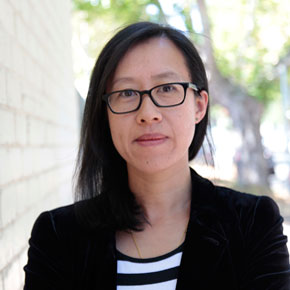Six simple tips from Rebecca Lim for reflecting diversity in the classroom

As Fremantle Press gets ready to publish YA anthology Meet Me at the Intersection, one of the book’s editors, Rebecca Lim, offers six tips for how to reflect diversity in class materials and discussions.
From choosing your themes to making the most of social media, it’s easy to create an environment in which everyone feels valued and can openly discuss diversity and difference.
Lim advises that ensuring diversity in your library displays and digital media can have a range of benefits including the reduction of bullying and an increase in social awareness.
‘[Reflecting diversity] increases empathy across all students, and makes them at least think about other people’s perspectives,’ she said. ‘You want that light bulb moment where they go, “Hey yeah, things aren’t fair/the same for everyone!”‘
1. Create displays around genres or themes and ensure diversity within them
‘I’ve seen well-meaning librarians set up entire displays of books featuring Caucasian girls in prom dresses as something “nice” for students – think about your book covers reflecting kids in your cohort, or at least put a mix of different visuals in there. When it comes to gender diversity, try not to use too many books with covers that represent women as faceless or by their body parts alone. Try to reinforce that women are not all interchangeable victims and that people come from all walks of life.’
2. Have students share different forms of literature
‘Get students to talk about things that they engage with. Manga is okay, so are snippets of performance poetry or rap. Illustrations are completely fine too. Not everything has to be expressed in words.’
3. Encourage people to read outside of their comfort zone
‘Get boys to read books with “girly” covers. Think about covering books in brown paper and doing a lucky dip so that they are forced to just read what is in the book without judging the story by its marketing jacket.’
4. Don’t shy away from certain subjects
Students will all have vastly different experiences. It’s important to make sure they see themselves reflected in what they are reading and discussing.
‘Talk about mental illness and disability. Don’t hide these narratives.’
5. Think about bringing your themes in line with internationally recognised days
‘The recent International Stress Awareness Day could be used to encourage students to post on social media about books dealing with mental health, or on World Refugee Day have posts relating to stories or books written by refugees and children of refugees.’
6. Don’t just do a diversity theme and then forget about it
Assess whether you are reflecting diversity in every display, post, or event you do.
‘[Reflecting diversity] tells all of your students, not just the mainstream ones, that they are valued, they are seen, they are not invisible, that they are as important as everyone else in the school community and they aren’t slipping through the cracks … The less is made of “difference”, the more “difference” is accepted and normalised. Then fewer “different” kids are likely to be singled out for abuse or ignored.’
Rebecca Lim and Ambelin Kwaymullina are the editors of Meet Me at the Intersection, an anthology of short fiction, memoir and poetry by authors who are First Nations, People of Colour, LGBTIQA+ or living with a disability.


